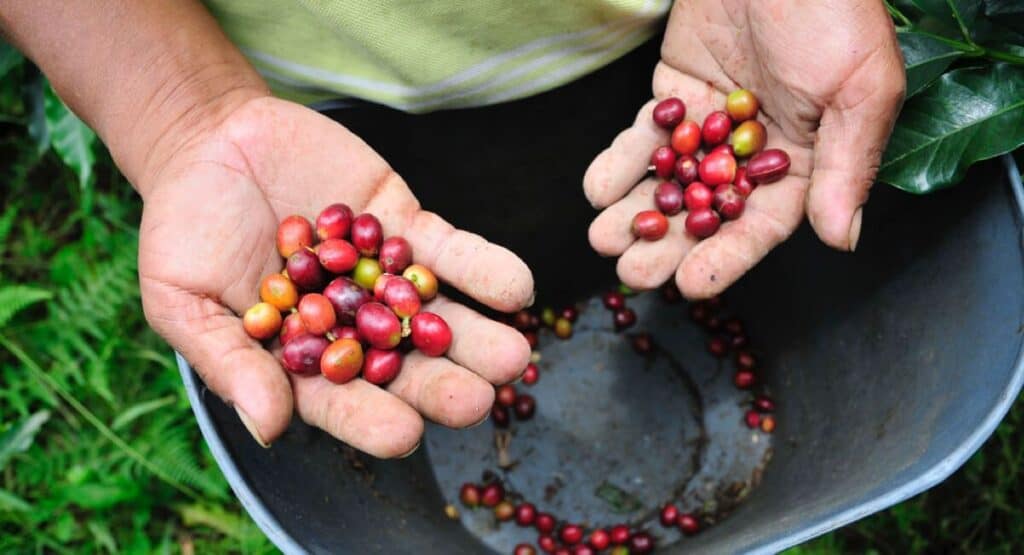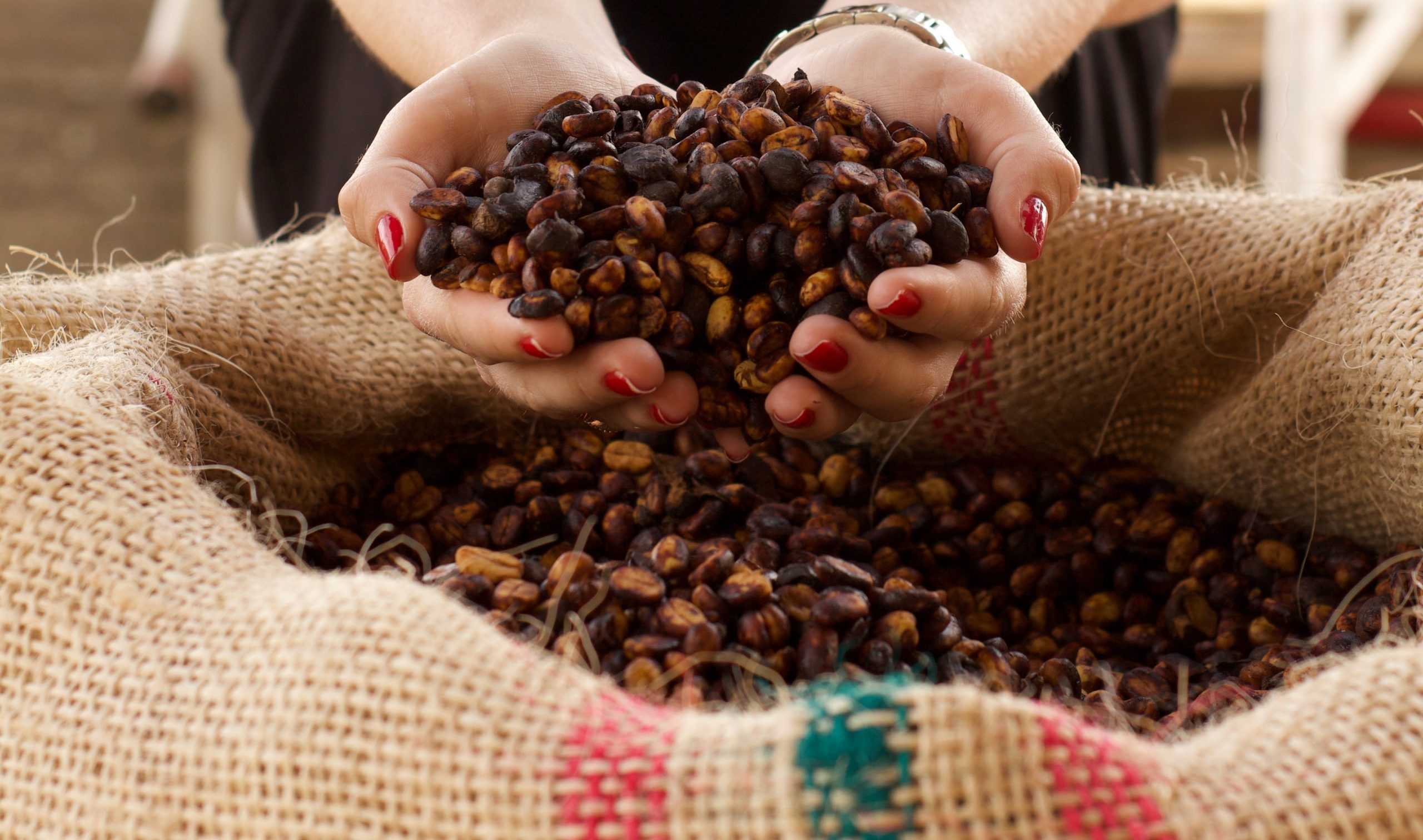
This time we “visit” Colombia, which is home to several absolutely remarkable coffees. The country, which has successfully marketed itself with the well-known farmer Juan Valdez, grows many good coffees, but in some areas also suffers under the administration of an NGO export association. Read on to get a little wiser on the Colombian beans.
Colombian coffee is often characterized by being a well-balanced coffee, with a good acidity that is not overwhelming, and a nuanced aroma with subtle fruity taste notes. Colombia produces excellent coffee, grown at heights of over 1.50 0 meters, on small coffee farms that carefully hand-pick the coffee beans. Colombia is the 3rd largest coffee producer in the world and the largest producer of Arabica beans. The coffee bean which is considered to be the most exclusive coffee bean
Juan Valdez – the incarnation of Colombian coffee
Many people probably remember the African woman in the profile who characterized Cirkelkaffe in Denmark (which, incidentally, is very modern again).
Colombia’s counterpart to this is the coffee farmer Juan Valdez, who was founded in 1958 by the Federación Nacional de Cafeteros (FNC) as part of the very active marketing of Colombian coffee.
The purpose at the time was primarily to focus on pure Colombian coffee and differentiate it from coffee blends of different nationalities. However, the fictional character Juan Valdez, most often in the company of his densely packed donkey Conchita, became such a huge advertising success that it spread globally.
Colombian coffee gained an uncritically good reputation and today the brand Juan Valdez is not only an advertising character but also a coffee company that sells and/or has coffee bars in countries such as the USA, Spain and a number of South and Central American countries.
FNC – coffee association for better or worse
Colombia, like many other coffee-producing countries, also has an association that looks after the interests of farmers and not least controls the export of their coffee production.
The Colombian edition is called as previously mentioned FNC and in many ways, it is a magnificent specimen of its kind. For since its founding in 1927, it has evolved so much that it not only represents and promotes the national coffee industry and its farmers. Pga. great economic growth, it has financed major infrastructures in the country as well as several health centres of various kinds.
In practice, the FNC is owned by its members – ie. over 500,000 people. But even though the association stands strong, there is also a flip side to the coin. For precisely its strength and original function, is also in some aspects its weakness. Caring for the interests of hundreds of thousands of members in the field of coffee cultivation may provide them with optimal conditions for producing and selling.
But the more quality-conscious consumers argue that there is a compromise with coffee quality, as there do not seem to be greater quality requirements for members. It is, of course, a major dilemma from a human perspective, as conditions are probably tougher in Colombia and the danger of falling outside the community may have greater consequences for the individual on several levels.

Areas / farms
Colombia is one of the world’s most and perhaps also best coffee-producing countries. As a result, the country also spans a wide range of flavour nuances – everything from heavy and chocolate-like shades to the sweeter and more fruity ones.
Below you will find five selected areas that stand out in different ways among Colombia’s many coffee areas and regions.
- The Cauca region is known for its very favorable growing conditions due to a very stable climate all year round. It is close to the equator and the Pacific Ocean, but has some surrounding mountains that protect the area from too much humidity. At the same time, the volcanic soil and subsoil contribute to stability in cultivation. Cultivation heights: 1700-2100 m.
- Huila – another region with good arable land and geography. The region produces very complex and fruity coffee beans that are particularly suitable for filter coffee. Cultivation heights: 1250-2000 m.
- Quindio – one of the smaller regions, which in turn is quite susceptible to climate change – both short- and long-term. Many farmers have for the same reason changed the profession from coffee production to e.g. citrus and nut production. The region is also home to a coffee theme park as well as an annual coffee festival. Cultivation heights: 1400-2000 m.
- Caldas – historically one of Colombia’s best coffee regions. In recent times, however, there has been increased competition from the other regions. The region is home to the FNC’s National Coffee Research Center, which is considered a leader in its field of research into numerous aspects of coffee cultivation. Cultivation heights: 1300-1800 m.
- Santander – one of Colombia’s first exporting coffee regions. The region grows coffee beans at relatively low altitudes (1200-1700 m) and the taste therefore carries in the direction of a heavy and sweet experience, which many like to use in espressos or blends. The cultivation in the region takes place with emphasis on the conditions of nature and the region’s farmers are therefore largely certified by the “Rainforrest Alliance” – something that is becoming more and more important in times of climate change.
The post is written with inspiration from James Hoffmann’s coffee book ‘The World Atlas of Coffee’, which you can also read more about here on the site and possibly buy if you want more information about other of the world’s coffees.
I hope that this concluding post gave you a better insight into Colombia’s coffee cultivation and that the different countries that we have covered have given an idea of what you might need to look for when choosing coffee. It can be a jungle of choosing the right bean, and in the end, it’s all about taste and pleasure. Therefore, I hope that the posts, if nothing else, have been able to serve as a guide for which countries and prayers can be exciting to take a closer look at for you.
The best Colombian coffee
Colombia has their ‘The Colombia Federation of Coffee Growers’ which is an association that helps the coffee beans get their coffee processed and distributed to the rest of the world. Unfortunately, this has the disadvantage of following old and rigid rules regarding the collection and distribution of coffee. This means that even though a coffee from one farm is absolutely fantastic, it can be mixed with a mediocre coffee from another farm when it has to go through the association’s treatment.



Comments are closed.